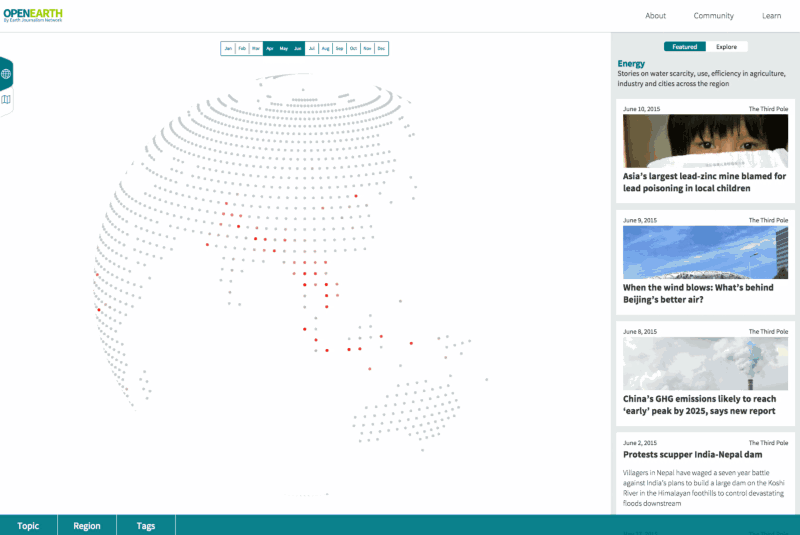The Earth Journalism Network, a project of Internews, has been working in geo-journalism for years. They stand out as leaders in using geo-spatial info to tell human stories. Because they are part of Internews, these stories cover crucial environmental, climatic, and political topics often for under-represented global voices. And their GeoJournalism team has also created a toolkit for journalists to use geospatialtools. They even train journalists to use our Field Papers project, which we think is pretty cool.

We’ve been working with EJN to merge these GeoJournalism projects into one global site, Open Earth. By putting all of these local stories from around the world together, it connects them into global narratives and patterns. Open Earth lets users explore all of EJN’s geolocated stories. The stories link back to their local sites, acting as a hub for stories worldwide about climate change, environmental impacts, urbanization, and global development. And the site will grow over time as more GeoJournalism regions pop up around the world.
Open Earth is launching this weekend at COP21, the United Nations Climate Summit in Paris. The Earth Journalism Network is in full force at the event, with 40 journalists from all over the world reporting on climate vulnerability in their home towns, from Arctic melt to Himalayan drought. EJN will feature these stories on Open Earth, when they unveil it this weekend at the Global Landscape Forum.
Of course, this is just the beginning. Open Earth is also building partnerships with organizations to add open climate data to the site. We’ll be working with EJN moving forward to design this interface between personal stories and global climate data. More on that soon, & stay tuned to our Twitter feed for updates if you’re interested.
